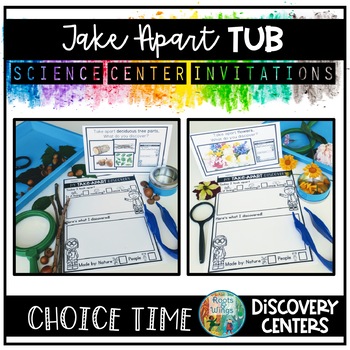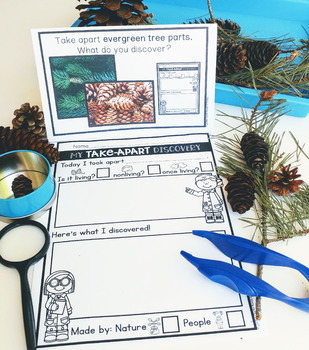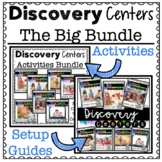Kindergarten Science Center Activities, Take-Apart Tub, Sensory Bin, Nature Tray
- PDF
Also included in
- These science center activities are my favorite ways to encourage scientific thinking and practices in my kindergarten classroom, but can also be used in preschool, first grade or homeschool. Use these fun science centers as an independent activity, investigation station, science tubs, morning work,Price $15.00Original Price $23.00Save $8.00
- These center activities are my favorite ways to playfully practice both academic and social skills in my kindergarten classroom, but can also be used in preschool, first grade or homeschool. Use each center as an independent activity in a center, bin, or tub or for morning work, choice time or freePrice $50.00Original Price $87.00Save $37.00
- If you are looking to setup developmental centers, such as blocks, story, math, writing, STEM, science, or art, in your preschool, kindergarten, or first grade classroom, this resource has everything you need to get started. It includes a set of 7 setup guides (one for each center) that will walk yoPrice $62.00Original Price $122.00Save $60.00
Description
Take hands-on learning to a new level by having a Take-Apart Tub, sensory bin or nature tray in your preschool, kindergarten, or homeschool science center. Kids love taking things apart and it's a great way for your young scientists to learn the inner workings of both natural and human-made objects.
✅How Does This Science Center Work?:
Each week, month, or season choose a new object to add to your Take-Apart Tub, sensory bin, or nature tray. Objects can be gathered by you, your class, or by families.
Use the questions listed on the back of each task card to introduce the new take-apart tub object and teach important science concepts that help children explore life cycles, structure and function and how things are made.
Read Science Center Activities Your Kiddos Will Love to read more about this center and other science activities.
✅What's Inside This Science Center Activity?:
- 18 Full-Color Task Cards to place at your science center
- Kinder-Friendly Recording Sheets
- Colorful Labels for Your Science Center, Sensory Bin, or Nature Tray
✅How Can I Use The Take-Apart Tub?:
There are many ways to use this science center. You might try:
- Sensory Bins
- Nature Trays
- Science Tubs
- STEM Stations
- Science Centers
- Choice Time
- Free Play
- Morning Work
- Early Finisher Task
✅Which Science Skills Will Kids Practice?
- Observation
- Sorting and Classifying
- Life Cycles
- Structure and Function
- Compare and Contrast
- Science Drawing/Writing
✅More Kindergarten Center Activities:
- Math Center Invitations
- Makerspace Invitations
- Science Center Invitations
- Block Center Invitations
- Storytelling Invitations
- Writing Center Invitations
- Art Center Invitations
⭐Need help setting up a science center in your classroom? Check out this Science Center Setup Guide for tons of ideas to get you started.
✅What Teachers Say About This Science Center Activity:
❤️"My students absolutely LOVE taking things apart and have now started looking at other things wondering “what it’s like inside”! It makes teaching and learning interactive and FUN!" Sherry C.
❤️"I used the sunflower take apart last week and the kids LOVED it. What a fun idea. Some of my kids could write on their own what they discovered (22 petals, 1 stem, leaves, seeds). The younger kids needed assistance with writing but loved the take apart. " Donna C.
❤️"My students enjoyed coming in to see what the new activity was for the week. They loved it." Heather G.
I so appreciate your feedback and take time to read every comment! Click on the star under my store name to find out about new products, sales, freebies!
NEW PRODUCTS ARE NOW LISTED AT 50% OFF FOR THE FIRST 48 HOURS. FOLLOW AND SAVE!








